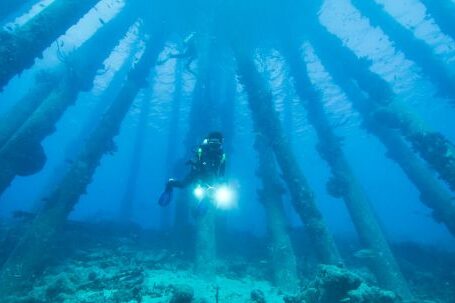Technical diving is a form of scuba diving that goes beyond the limits of recreational diving. It involves diving deeper, staying underwater for longer durations, and utilizing specialized equipment and techniques to ensure safety. This type of diving requires extensive training, experience, and a thorough understanding of the risks involved. In this article, we will explore some of the advanced techniques used in technical diving.
Gas Blending and Decompression
One of the key aspects of technical diving is the ability to blend gases to achieve the desired breathing mix for different depths. This is known as gas blending. Technical divers often use a combination of gases such as helium, nitrogen, and oxygen to minimize the risk of decompression sickness and nitrogen narcosis. They also need to carefully plan and execute decompression stops to allow their bodies to safely eliminate excess nitrogen built up during the dive.
Rebreathers: A Game Changer
Rebreathers have revolutionized technical diving by recycling the exhaled gas, removing carbon dioxide, and adding oxygen as needed. This allows divers to stay underwater for longer periods without the need for frequent gas changes. Rebreathers also have the advantage of producing fewer bubbles, making them ideal for underwater photography and research work. However, they require additional training and maintenance due to their complexity.
Dive Planning and Gas Management
Technical divers spend a significant amount of time planning their dives in detail. This includes calculating the amount of gas required for the dive, taking into account factors such as depth, bottom time, decompression obligations, and emergency contingencies. Gas management is critical in technical diving to ensure that divers have enough breathing gas at all times, both during the dive and during decompression stops.
Wreck and Cave Diving
Technical divers often explore wrecks and caves, which present unique challenges and hazards. These environments require specialized training and equipment to navigate safely. Wreck divers need to be proficient in using guidelines, reels, and tools to penetrate the wreck and explore its interior while maintaining a clear exit path. Cave divers, on the other hand, need to master advanced techniques such as line laying, navigation, and gas management in the confined spaces of underwater caves.
Extended Range and Deep Diving
Extended range and deep diving are some of the most challenging aspects of technical diving. Extended range dives involve pushing the limits of no-decompression diving by using advanced gas mixtures and decompression strategies. Deep dives, on the other hand, require careful planning and consideration of factors such as gas narcosis, oxygen toxicity, and the potential for nitrogen narcosis. These dives often require multiple stages of decompression and meticulous gas management.
Equipment Considerations
Technical divers use a range of specialized equipment to support their dives. This includes redundant gas supplies, multiple dive computers, backup lights, and cutting tools. They also utilize equipment such as stage bottles and reels for gas management and navigation. Technical divers need to be proficient in using and maintaining their equipment, as well as understanding its limitations and how to troubleshoot any issues that may arise during a dive.
In conclusion, technical diving is a challenging and rewarding form of scuba diving that requires extensive training, experience, and a deep understanding of the advanced techniques involved. From gas blending and decompression to the use of rebreathers and the exploration of wrecks and caves, technical divers must possess a wide range of skills to ensure their safety and the success of their dives. By mastering these advanced techniques, experienced divers can explore the underwater world in ways that few others can.





